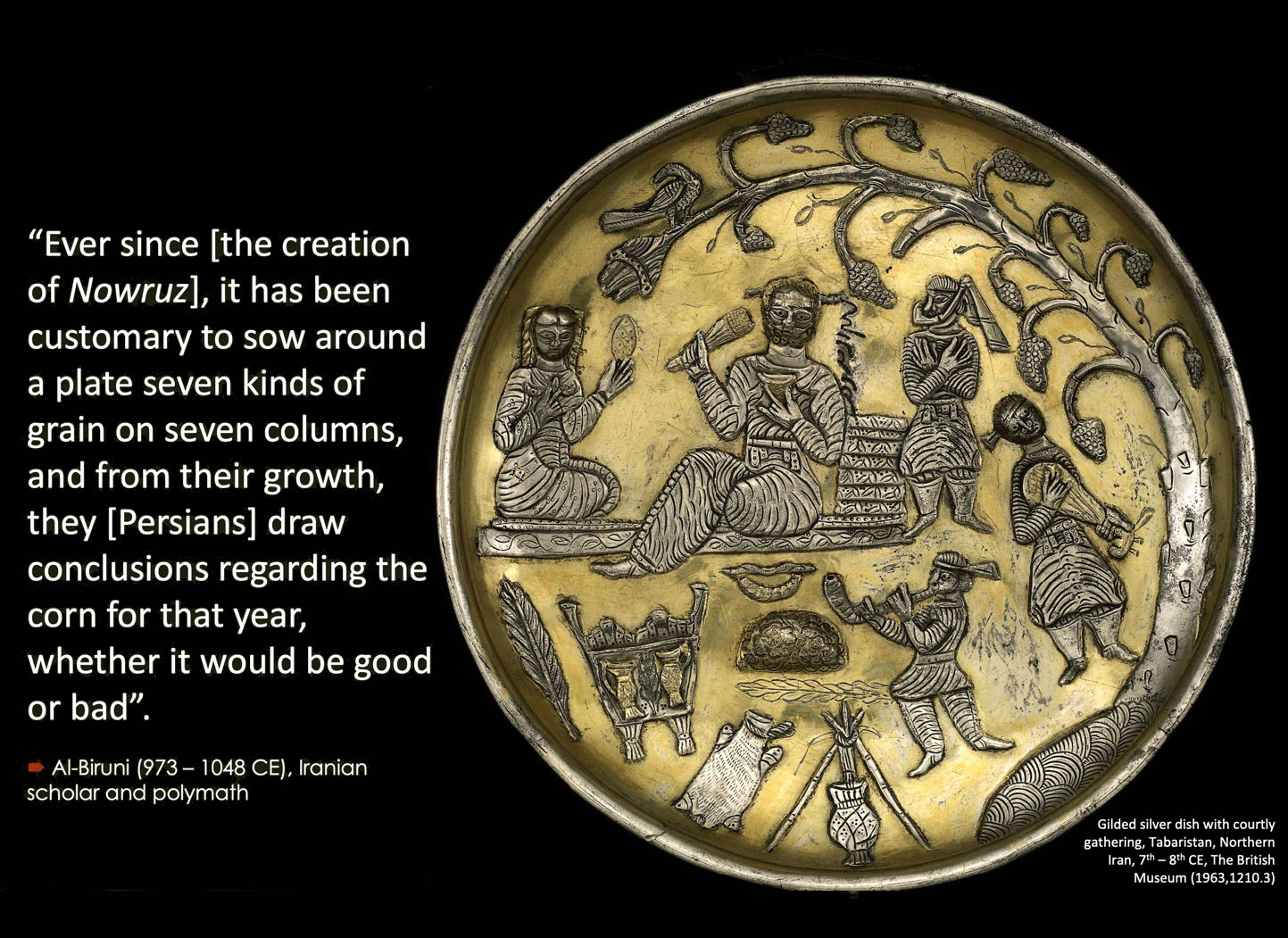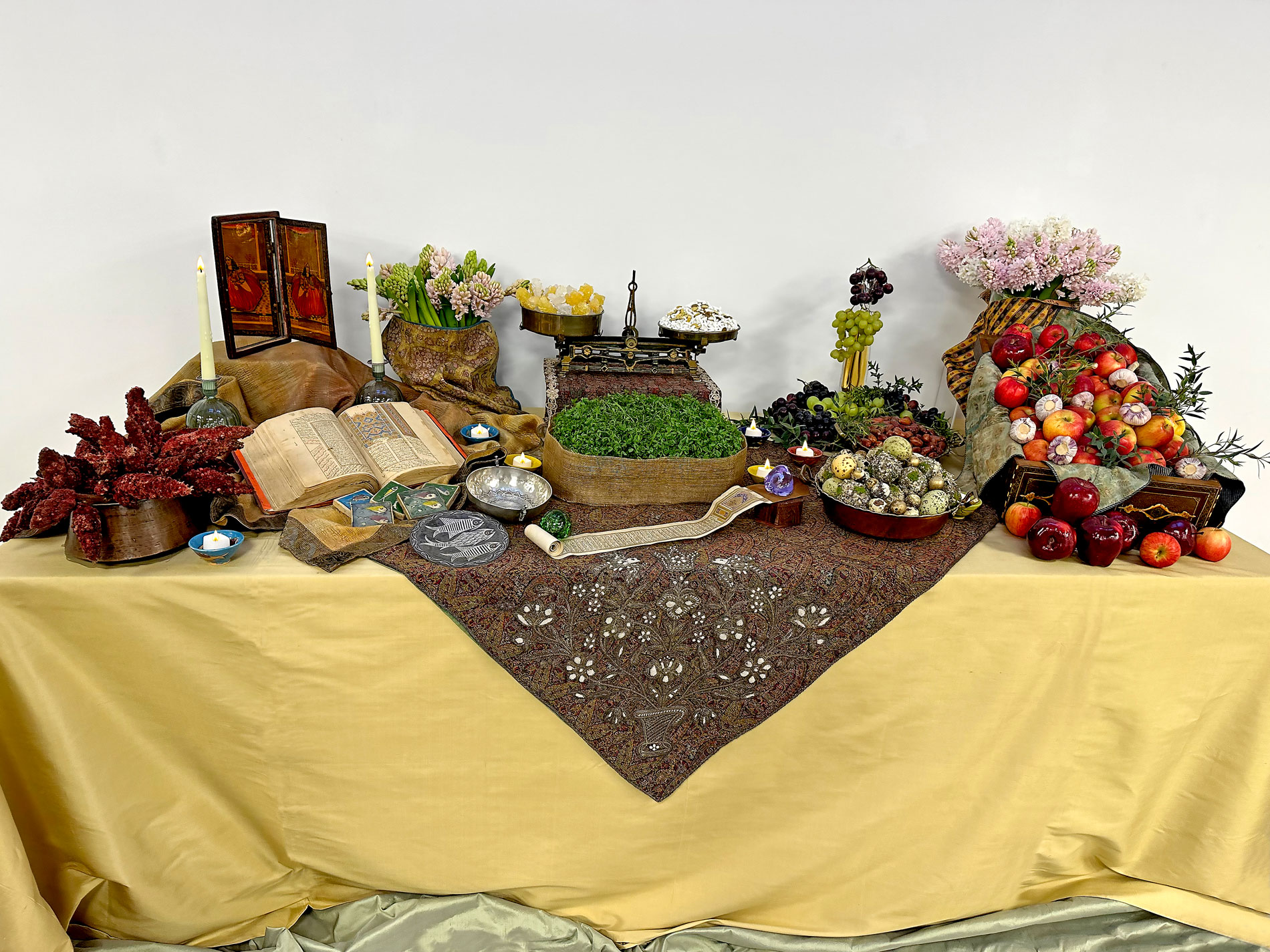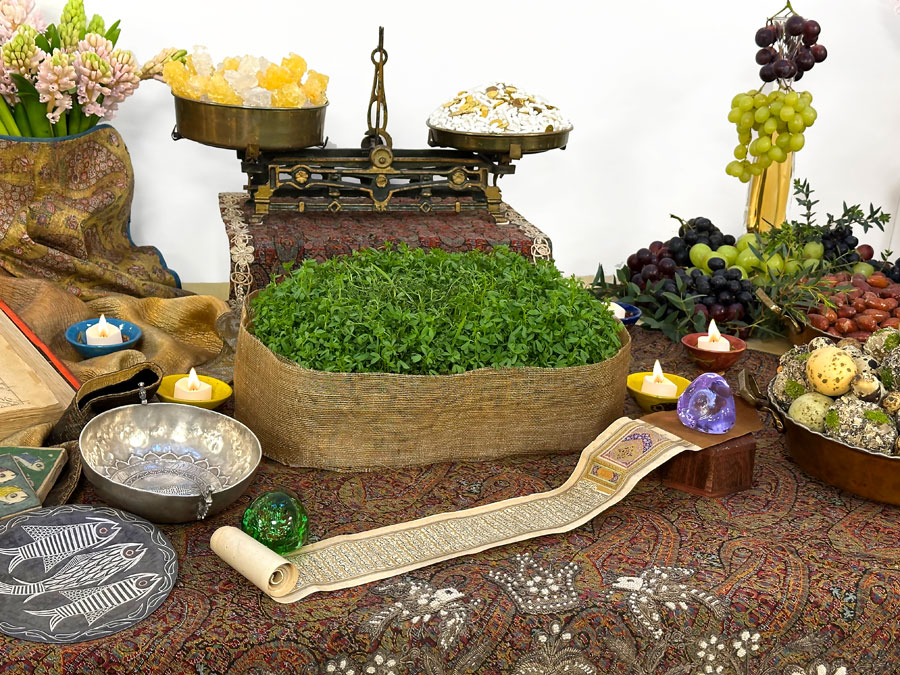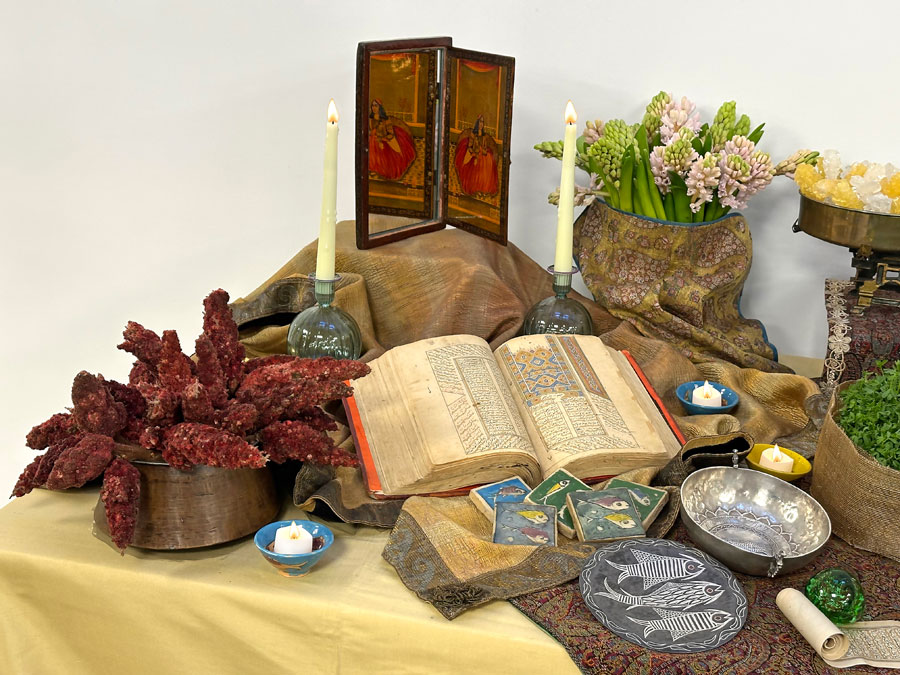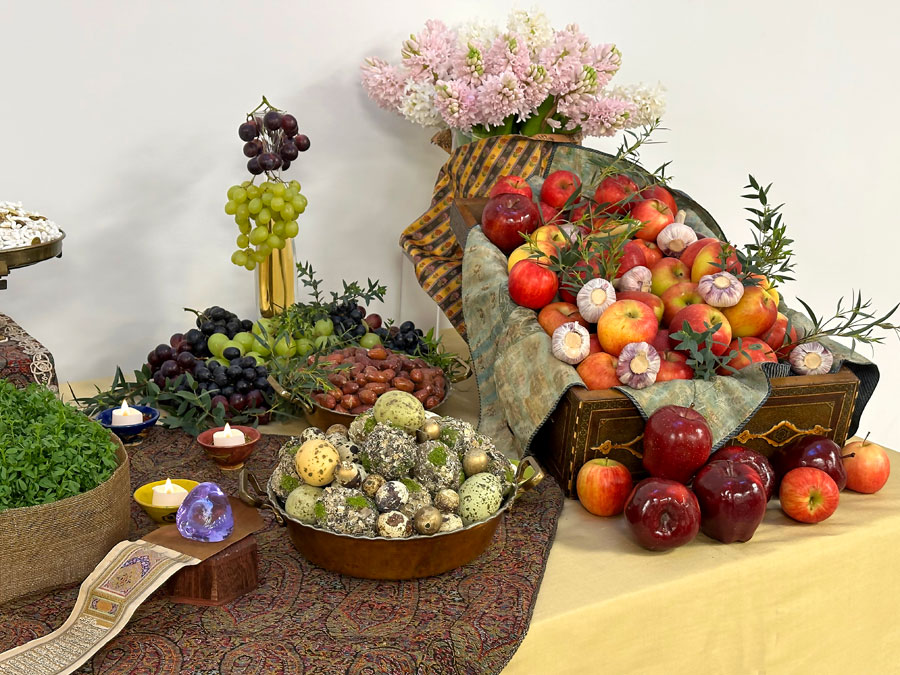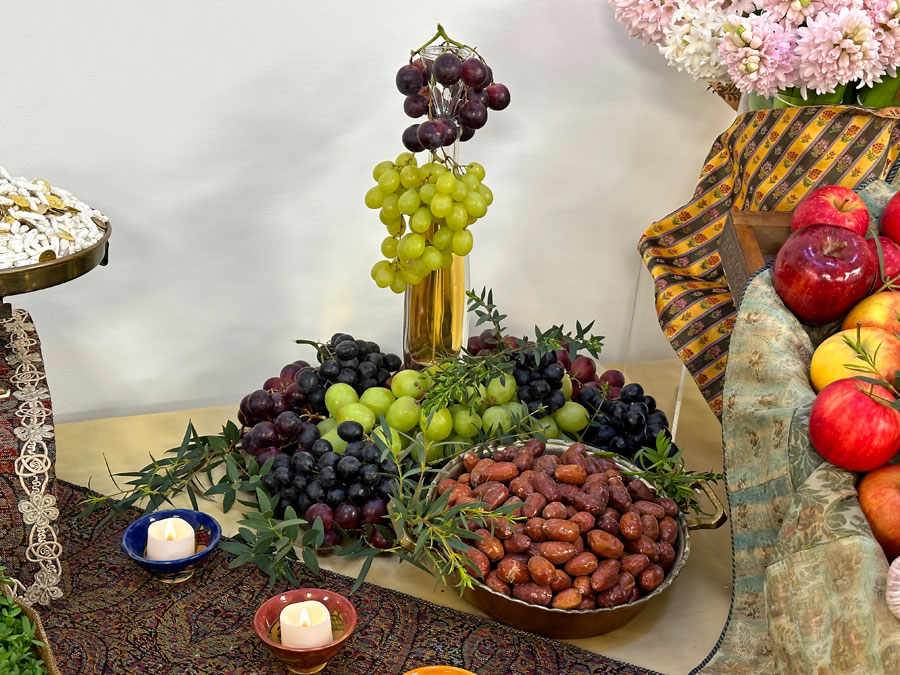London Nowruz Event
A presentation about Nowruz was organized by Azca Auctions (https://www.azcaauctions.com/news/) on 16 March 2025. Beatrice Campi, Head of the Islamic and Indian Art Department, gave an introduction and provided a brief outline of Nowruz, followed by Maryam Khosrowshahi, the co-author of SOFREH: The Art of Persian Celebration, who delivered the essays about the history and origins of the sofreh-ye Nowruz or haft sinn, which were contributed to SOFREH by Dr Willem Floor.
Maryam also designed this elegant sofreh specially for the occasion.
This is the overall view of the sofreh. It includes a variety of fine antique objects, some of which were part of the Ethnographica auction of April 2025. The combination of contemporary Persian copper containers, a pair of antique utilitarian scales, antique containers with fish designs and fine antique Persian texts and textiles creates an exquisite ensemble. This elegant sofreh is a good example of a successful marriage of antique and contemporary items and practices. The fresh symbolic elements of the haft sinn – germinated seeds, fruits, flowers and foliage are, of course, the highlight of the sofreh.
Click on the images below to enlarge
This is the heart of the sofreh. An attractive pair of antique scales presents sugared almonds (noql), crystal sugar (nabat) and gilded coins (sekkeh). In the Persian tradition, “noql o nabat o sekkeh” are synonymous with joy and celebrations—they represent sweetness, harmony and prosperity. In some parts of Iran, scales used to be part of the sofreh-ye Nowruz, to symbolize a balanced year. This image also focuses on an impressive block of germinated lentils (sabzeh), the very essence of this spring festival (bahar jashn) and a symbol of renewal and rebirth.
This is the left corner of the sofreh. An antique lacquered Qajar mirror stands tall on the edge, flanked by attractive glass candle holders. An impressive bunch of deep-red sumac (somaq) branches, representing growth, peace and harmony, is presented in a Persian copper container. An antique volume of hand-written Persian verse with exquisite illumination is on display. Antique vessels and contemporary colourful tiles with fish motifs stand in for live fish. A voluminous bouquet of pastel shades of hyacinths, elegantly wrapped in a length of antique Persian silk, enhances the beauty and fragrance of this section.
This is the right corner of the sofreh. An antique Persian wooden box, decorated in the khatam kari manner (Persian marquetry) and lined with a length of antique Persian silk, holds a variety of apples, which pour out of the box over the sofreh. The arrangement is speckled with fresh bulbs of garlic and fine sprigs of a type of aromatic Eucalyptus. Tastefully decorated eggs and senjed are presented in attractive Persian copper vessels. A bottle of vinegar, embellished with grapes, is visible in the background, as is a bouquet of fragrant hyacinths (sonbol).
The focus of this image is an elegant, elongated bottle of vinegar (serkeh), a symbol of patience, richly adorned with a variety of gracefully hanging grapes. In the foreground, an attractive contemporary Persian copper container showcases some senjed (jujube fruit or Russian olive). It is believed that the fragrance of senjed stimulates love and companionship and is considered a stimulant to aid the rebirth of the world. Both the grapes and senjed are embellished with delicate sprigs of a type of Eucalyptus. Sections of fine antique Persian silks are also visible in the image.
For the event at Azca Auctions, a section was dedicated to presenting SOFREH: The Art of Persian Celebration, for sale for the benefit of the Popli Khalatbari Charitable Foundation (www.pkcf.com). Appropriate to the season and the traditions of Nowruz, the table was decorated with a block of germinated wheat, which was elegantly wrapped in a length of bright red antique textile, and a vase of pastel spring flowers—parrot tulips, hyacinths and narcissus—which not only symbolized rebirth, but also perfumed the air. The two-volume book is a decorative object in itself, and makes an enduring gift. To order a copy, please go to the Book Page.

